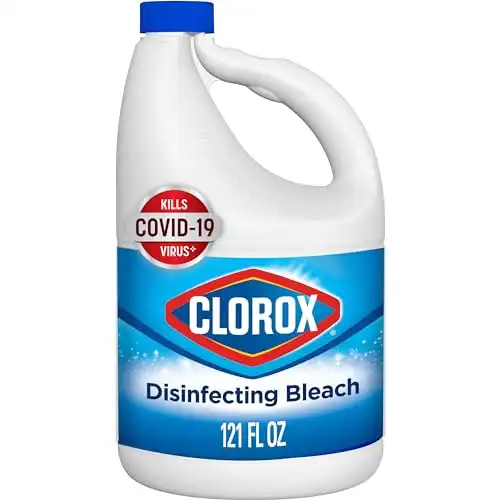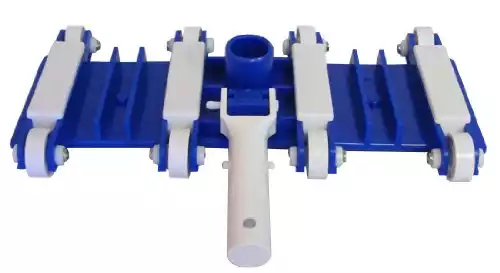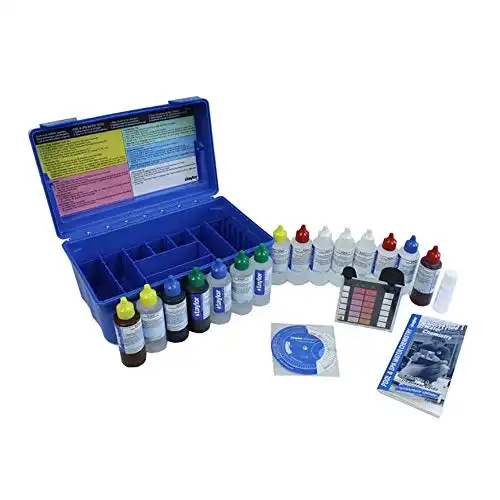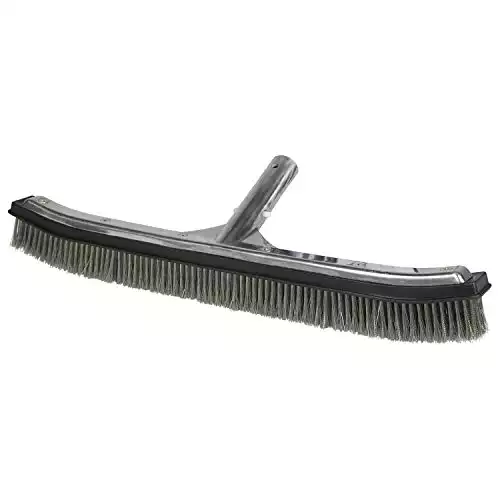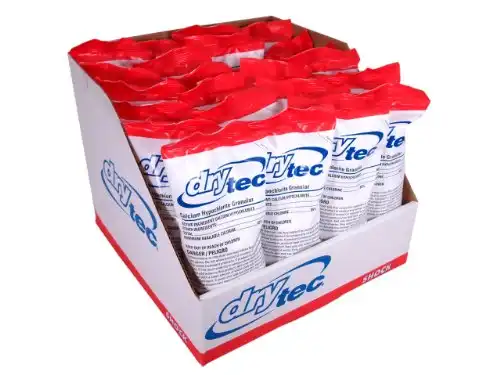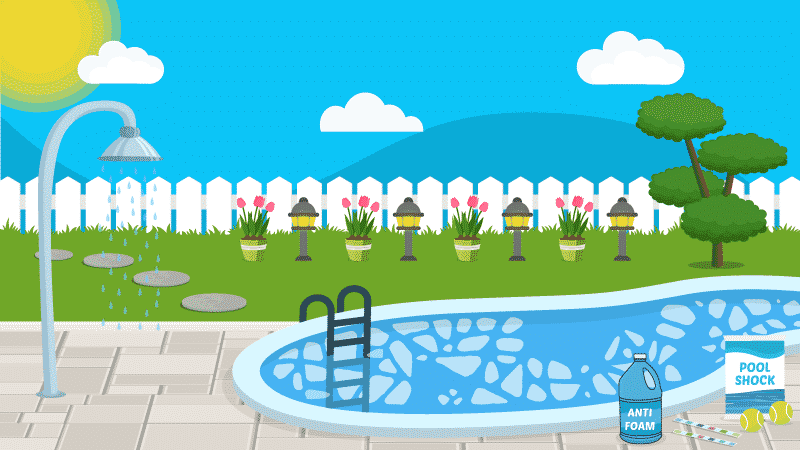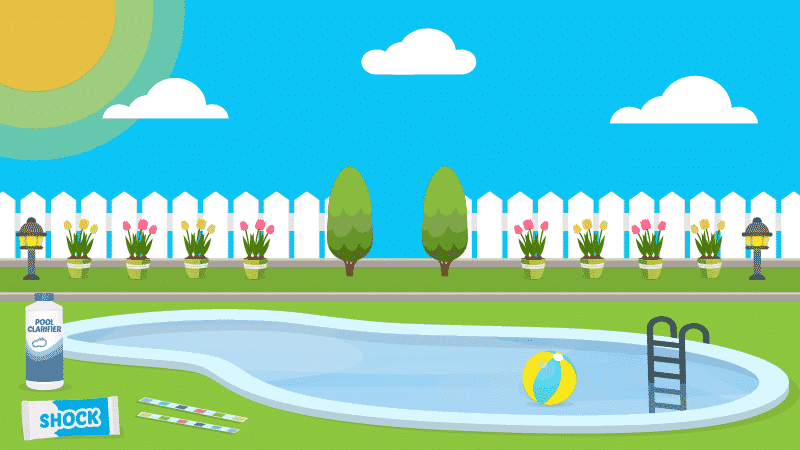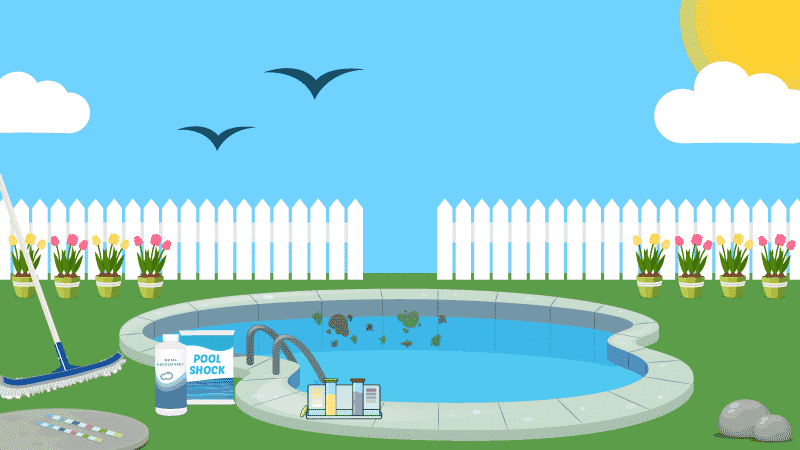How to Get Rid of Mustard Algae in a Pool
Mustard algae in your pool is rare but persistent. By following a few simple instructions, you can scour away this microbial menace, and keep it from coming back.
Stop wasting time and money with confusing water chemistry and maintenance. Our effortless system guarantees to keep your pool balanced, sanitized, and crystal clear all year. Works for all pools including saltwater.
What is Mustard Pool Algae?
Its verdant cousin, green algae, is slimy and tends to cling to walls or form gross, blobby “patties” in your pool. But mustard algae is a horse (or at least a plant) of a different color.
Commonly found in southern climes, and more rarely in northern ones, mustard algae is often mistaken for sand, dirt, or a stain in your pool. It’s a member of a microbe family known as xanthophytes. These algae are chlorine resistant, and more persistent than an Amway salesman in a stuck elevator.
Mustard algae likes to attach itself to pool walls and other items, which is a problem since it can also survive outside your swimming pool. This nasty little customer can piggyback on pool equipment, toys, floats, and even your bathing suits. You’ll definitely want to have the disinfectant handy if you even suspect your pool has an infestation of mustard algae.
Kill Mustard Algae in Ten Easy Steps
If a dose of the yellows is giving you a serious case of the blues, there’s no need to panic. Following a few simple steps will help you banish the bloom and regain your swimming sanity.
1. Machine Wash Your Bathing Suits
A trip through the laundry will kill off any mustard algae clinging to life on the fabric of your suits. Regular or color-safe bleach, as appropriate, can give you added peace of mind.
2. Clean Your Pool Toys, Floats, Etc.
Using a clean cloth and a chlorine-based cleaner (but not straight-up bleach), give all your pool toys and other accessories a thorough wipe-down.
Why not just reach for the bleach? Using full-strength bleach could damage some plastics and rubber items, so it’s best to stick with a multipurpose cleaner that’ll kill mustard algae without destroying your possessions.
If all you have on hand is bleach, dilute it in a one part bleach to ten parts water solution before applying it to any surfaces.
Bleach with 7.5% sodium hypochlorite offers powerful sanitizing capabilities.
3. Move Your Pool Equipment to the Shallow End
Gather up all your maintenance equipment, including all your hoses and poles, and place them in the shallow end of your pool, if it has one. If you have stuff on hand that might be infected with mustard algae, but is too awkward or bulky to sanitize by hand, go ahead and add it to the pool too.
Consolidating all your gear in your pool will make it easy to disinfect everything when you add pool shock for sanitizing.
4. Brush and Vacuum out the Mustard Algae
Removal is the first step to a fully sanitized pool, and removing mustard algae begins with a good brushing. Use an algae brush to loosen the algae and make it easier to vacuum out.
Note: Mustard algae can live in your pool’s filter, so switch it to the “waste” setting rather than “backwash” before you fire up the vacuum.
Manually vacuum the pool, taking care to get as much of the mustard algae as possible.
Finally, add fresh water to replace the water lost to vacuuming.
Designed to clean concrete and fiberglass pools. The vacuum head has a flexible design enabling it to fit the contour of your pool and will not scratch or damage.
5. Test and Balance Your Pool Water
When you have too little sanitizer or your water chemistry is otherwise out of whack, algae can thrive. Time for some pool water testing! Grab some test strips and have at it.
After you’ve taken a reading, adjust your water’s alkalinity and pH—in that order—as needed to reach a total alkalinity of 100 parts per million (ppm) to 150 ppm and a pH level of 7.4 to 7.6. Properly balanced water will help your pool shock work more effectively and make sure it (ahem) cuts the mustard.
A simple but effective liquid test kit for chlorine pools and hot tubs.
6. Brush Your Pool—Again
And you thought the dentist was a nag. Grab your trusty algae brush and give the entire pool a good scrubbing.
This’ll help break up the remaining algae and get it into suspension. When it’s free-floating in the water, your pool shock of choice will have a much easier time attacking and destroying it.
This brush helps remove dirt, contaminants, bacteria, and algae from porous surfaces. For unpainted concrete or gunite pools only.
7. Triple-Shock Your Swimming Pool
No, we don’t mean embarrassing the pool in public or telling it you never loved it. Just like regular old boring green algae, mustard algae is susceptible to the cleansing might of pool shock, especially at high concentrations.
Use three pounds of pool shock for every 10,000 gallons of pool water. To maximize your shock’s efficiency, add it to your pool at dusk or during the night. Leave your filter and pump running 24 hours a day until the algae is gone.
This fast-acting, quick-dissolving swimming pool shock kills bacteria, controls algae, and destroys organic contaminants in pools.
8. Keep On Brushin’ and Balancin’
Channel your inner Marcia Brady and brush like a fiend in the days following the triple-shock. You’ll discourage the mustard algae from clinging to your pool and keep it in suspension for faster annihilation.
Adjust your chlorine levels as necessary to keep its killing power high. Make sure you test your pH and alkalinity levels frequently, adjusting as necessary to keep them in the optimal ranges.
9. Shock Again for Safety
After a few days, any remaining mustard algae will be lulled into a false sense of safety. They might think they’ve escaped, despite your mad brushing and shocking and testing. They might even be a little cocky. That’s when you strike with the fury of a thousand angry gods. Ha! That’ll teach ’em!
If you don’t have the fury of a thousand angry gods lying around at home, try another dose of shock, at regular strength. One pound of shock for every 10,000 gallons will help ensure your pool’s truly sanitized. And remember, be sure to shock at dusk or after nightfall.
10. Test and Confirm Your Pool is Algae-Free
After the final shock treatment, test your water chemistry. If the balance is right, and your water appears to be clear, congrats! You’ve sent mustard algae packing.
You can remove your pool equipment and anything else you had soaking in the shocked pool too.
How to Keep Mustard Algae Away
Having tossed the mustardy interlopers out on their tiny yellow ears, you can keep them from coming back with a few simple precautions.
- Practice smart water chemistry. Keep your pH, alkalinity and sanitizer levels in the correct ranges at all times.
- Keep to a schedule. Run your pump and filter 8–12 hours a day, all season long. Keep your pool clean with regular brushing and vacuuming.
- Shock like it’s your job.Once a week, every week, add one pound of shock for every 10,000 gallons of pool water. Shock at dusk or in the evening.
- Clean everything. Yes, all of it. Pool toys, floats, ladders, steps, diving boards, slides, solar blankets, and covers can all harbor algae if left damp and dirty. A quick spray and wipe with a chlorine-based cleaner will go a long way toward protecting you and your pool from algae attacks.
One Clean Pool—Hold the Mustard
Why struggle with condiment-colored crud when you could be soaking up the sun? Catch up on your pool care and leave the mustard in the kitchen with the hot dogs.
With thorough sanitizing and regular care, you can kill mustard algae, prevent its return, and relish a stress-free swimming pool, all season long.
Happy Swimming!
3 Ways We Can Help With Your Pool
- Pool Care Cheat Sheets (Free): Easy-to-use downloadable guides to help you keep track of taking care of your pool this year.
- The Pool Care Handbook: An illustrated guide to DIY pool care, including water chemistry, maintenance, troubleshooting, and more.
- The Pool Care Video Course: You’ll get 30+ step-by-step videos and a downloadable guide with everything you need to know about pool maintenance.


